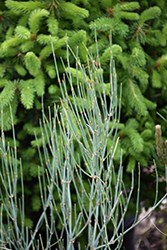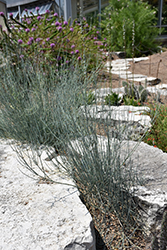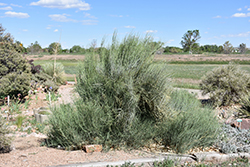Height: 5 feet Spread: 8 feet
Sunlight:
Hardiness Zone: 4b Brand: Plant Select Description: A unique grass-like alpine shrub presenting fine-textured, jointed, blue-green stems with an upright, dense habit; dotted with yellow flowers in spring, that are followed by red berries on female plants; perfect for massing in xeriscape gardens or borders Ornamental Features Bluestem Joint Fir has attractive grayish green foliage with hints of silvery blue on a dwarf conifer with an upright spreading habit of growth. The grassy leaves are highly ornamental and remain grayish green throughout the winter. It features subtle bracted yellow flowers along the branches in mid spring. It produces red berries from mid to late summer. Landscape Attributes Bluestem Joint Fir is a dense multi-stemmed evergreen shrub with an upright spreading habit of growth. It lends an extremely fine and delicate texture to the landscape composition which can make it a great accent feature on this basis alone. This is a relatively low maintenance shrub, and is best pruned in late winter once the threat of extreme cold has passed. It has no significant negative characteristics. Bluestem Joint Fir is recommended for the following landscape applications;
Planting & Growing Bluestem Joint Fir will grow to be about 5 feet tall at maturity, with a spread of 8 feet. It tends to fill out right to the ground and therefore doesn't necessarily require facer plants in front, and is suitable for planting under power lines. It grows at a medium rate, and under ideal conditions can be expected to live for approximately 10 years. This is a dioecious species, meaning that individual plants are either male or female. Only the females will produce fruit, and a male variety of the same species is required nearby as a pollinator. This shrub does best in full sun to partial shade. It prefers dry to average moisture levels with very well-drained soil, and will often die in standing water. It is considered to be drought-tolerant, and thus makes an ideal choice for xeriscaping or the moisture-conserving landscape. It is not particular as to soil pH, but grows best in sandy soils. It is somewhat tolerant of urban pollution. This species is not originally from North America. Characteristics
Applications
Features & Attributes
|


